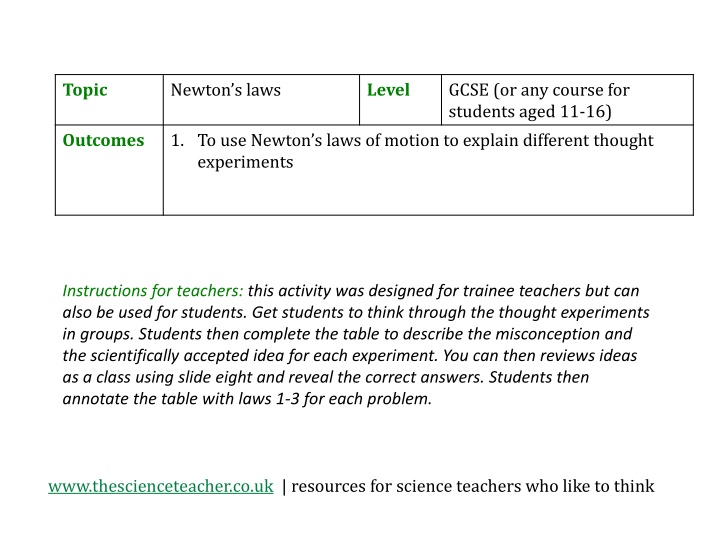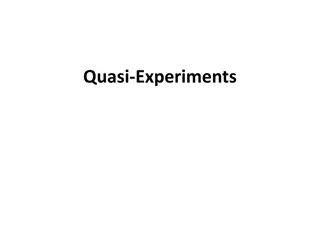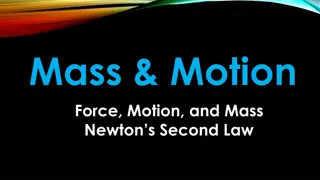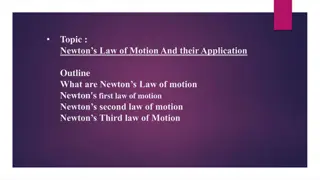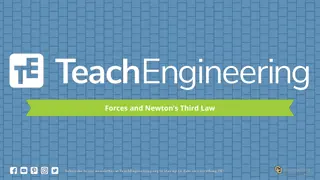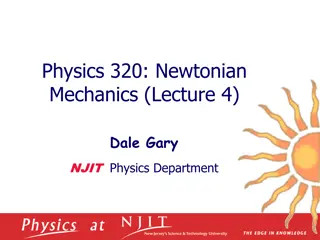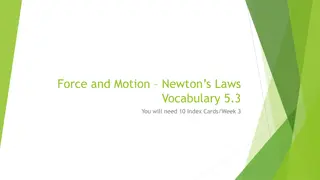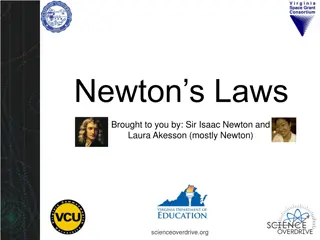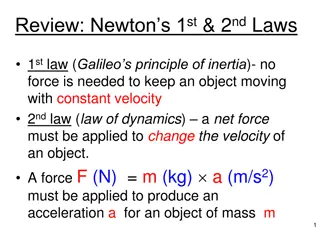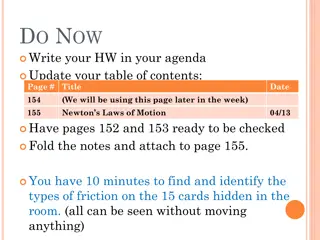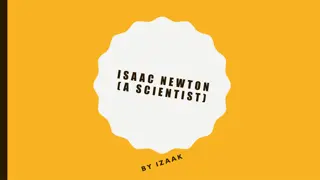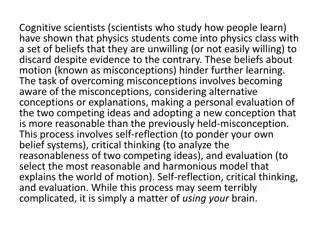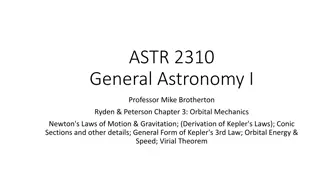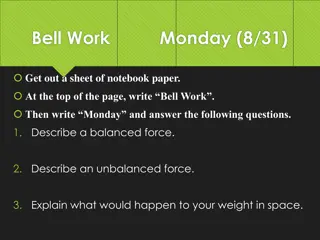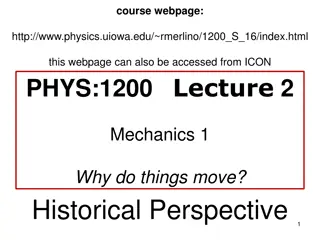Newton's Laws Thought Experiments Exploration
Engage students in analyzing and correcting misconceptions related to Newton's laws of motion through thought experiments. Encourage group discussions and reflections to deepen understanding. Use visual aids and analogies to support conceptual change.
Download Presentation

Please find below an Image/Link to download the presentation.
The content on the website is provided AS IS for your information and personal use only. It may not be sold, licensed, or shared on other websites without obtaining consent from the author.If you encounter any issues during the download, it is possible that the publisher has removed the file from their server.
You are allowed to download the files provided on this website for personal or commercial use, subject to the condition that they are used lawfully. All files are the property of their respective owners.
The content on the website is provided AS IS for your information and personal use only. It may not be sold, licensed, or shared on other websites without obtaining consent from the author.
E N D
Presentation Transcript
Topic Newton s laws Level GCSE (or any course for students aged 11-16) Outcomes 1. To use Newton s laws of motion to explain different thought experiments Instructions for teachers: this activity was designed for trainee teachers but can also be used for students. Get students to think through the thought experiments in groups. Students then complete the table to describe the misconception and the scientifically accepted idea for each experiment. You can then reviews ideas as a class using slide eight and reveal the correct answers. Students then annotate the table with laws 1-3 for each problem. www.thescienceteacher.co.uk | resources for science teachers who like to think
Supporting conceptual change Allow students to articulate their own views Perform thought experiments Give time for reflection and discussion Use bridging analogies e.g. a book resting on a spring helps explain that a table exerts a reaction force on a book Source: making sense of secondary science: Research into Children s ideas. Rosalind Driver, Anne Squires, Peter Rushworth and Valerie Wood-Robinson.
Thought experiment Likely misconception and explanation Idea held by physicists and explanation Newton s Law One bullet is fired horizontally from a gun and one bullet is dropped from the same height at the same time. Which bullet will hit the ground first? You are on a plane travelling at 800 km/h. You jump up in the aisle by seat B20. Where will you land? If two skaters with equal masses push against each other would they move apart at equal speeds? What happens if only one skater pushes on the other? A space rocket is taking off from Earth loaded with fuel. The thrust throughout its journey remains constant, yet its acceleration increases. Why?
Thought experiment Likely Idea held by physicists and explanation Newton s Law misconception and explanation One bullet is fired horizontally from a gun and one bullet is dropped from the same height at the same time. Which bullet will hit the ground first? There is a force that is pushing the bullet through the air so it will hit the ground last. The bullets will hit the ground at the same time as the only significant force acting on each bullet is weight (assuming negligible air resistance). First You are on a plane travelling at 800 km/h. You jump up in the aisle by seat B20. Where will you land? You will go backwards as you are no longer travelling at 800 km/h. You will land at the same point as you are still travelling at 800 km/h. Moving objects keep moving. A force is only needed to change the speed or direction of an object. Fist If two skaters with equal masses push against each other would they move apart at equal speeds? What happens if only one skater pushes on the other? If only one skater pushes then that skater will move away but the other skater won t. Forces act in pairs on different objects. If you push with 5N on another skater there will be an equal and opposite force acting on you of 5N. Both skaters will experience at force of 5N and so will move apart at equal speeds. Third A space rocket is taking off from Earth loaded with fuel. The thrust throughout its journey remains constant, yet its acceleration increases. Why? Less air resistance so smaller force stopping motion (this is true but would not be the most significant factor). Force = mass x acceleration. Acceleration = force/mass Second As the fuel is used up, the mass decreases. The thrust remains the same so acceleration must increase.
Which bullet will hit the ground first? One bullet is fired horizontally from a gun and one bullet is dropped from the same height at the same time. Which bullet will hit the ground first? Bullet fired Bullet dropped
Jumping on a moving plane You are on a plane travelling at 800 km/h. You jump in the aisle by seat B20. Where will you land? a) by seat B21 a) by seat B19 a) by seat B20
Skaters that push apart If two skaters with equal masses push against each other would they move apart at equal speeds? What happens if only one skater pushes on the other?
Acceleration A space rocket is taking off from Earth loaded with fuel. The thrust throughout its journey remains constant, yet its acceleration increases. Why?
Forces act in pairs Source: http://www.sas.upenn.edu/~kennethp/nkdievid2.pdf
